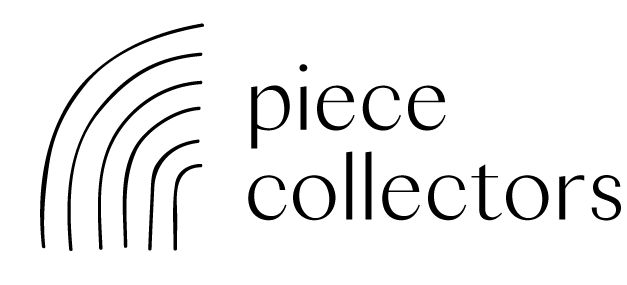Mexican Miracle Charms (Milagro)
The word milagro translates to “miracle”. Traditionally they were used as part of a religious ceremony whereby the believer would pray to one of the sacred symbols or associated Saint. Once the prayer has been answered, the believer will make a pilgrimage to the relevant site or church with the milagro, which they would leave there as a sign of devotion. In Mexico this process is referred to as a “Manda” .
Milagros are often carried for good luck and protection or as a reminder of gratitude - they make beautiful gifts and are special pieces to have in your home.
Common across Latin America, these small metal charms often depicting figures, body parts or animals, are open to interpretation.
Eyes
The milagro of the eyes is often connected with the popular Mexican saint Santa Lucia, patron saint of the blind - “bearer of light in the darkness”.
The eyes can also represent the concept of watching. One practice is to attach the milagro to the frame of the image of a deceased person, in the belief that this might represent the concept that the spirit of that person is watching over us, and helping to defend us from spirits from the land of the dead, or pleading our case before the saints and the angels.
The symbol of eyes also represents creativity, intuition and insight.
Heart
The symbol of the heart can represent the human heart. It can be quite literal and represent medical heart conditions. Or, it might represent the love that one person feels for another, romantic love, self love or the love of a parent, child or friend. It can also represent the Sacred Heart of Jesus, or the Sacred Heart of Mary. The heart milagro can also be used to heal a broken heart.
Body Parts
Various body parts, such as kidneys, livers, lungs, ears, noses, breasts, lips/mouth as well as the better known arms and legs are usually used when asking for help with a particular ailment of the identified part. A milagro in the shape of breasts for example, might be used to ask for healing from breast cancer, or improved milk supply for nursing mothers.
Praying Figures
This popular milagro can represent a man or woman, such as a mother, wife, father, husband, or any other man or woman who is perceived as being faithful and fervent, or it might represent the prayers of a man or woman. It can also represent any female or male saint.
Human Head
A milagro of the head might represent the man or woman’s mind, spirit, or a condition such a headache.
Children
This milagro might represent a male or female child, or a niece or nephew, a grandchild, or any other child. It might also represent the childlike qualities in anyone.
Hands + Arms
The milagro of the arm might represent an arm itself, and some condition associated with it. It could also represent one’s strength, one’s ability to work. It might represent an embrace and physical demonstrations of affection that involve embracing.
Feet + Legs
This might represent one’s leg and some condition associated with it, such as an injury, or arthritic condition. It might also represent one’s strength, and the concept of travel, such as not only walking, but a journey, or even the idea that one might be safe driving back and forth from work every day.
Houses
Milagros depicting houses normally represent, one’s own home, and the blessings that might be made on it, and on the family that dwells there. It can also represent the hope of having one’s home, or it can represent someone else’s home. It might also represent one’s workplace, or school. When traveling, it can be a charm to insure that one will arrive safely home again, or it can establish a connection between the traveller and the loved ones at home.
Poultry
The hen is actually a very powerful symbol, as are all of the animal milagros. This one might represent one’s own hen, seeking blessings so that she might always lay good eggs. Or, it might symbolize human qualities like those of a mother hen - the concept of mothering.
Cows + Bulls
The bull might symbolize strength, husbanding, protection, stamina, and endurance. It can also represent anger and can be used as a charm to dispel temper outbursts.
Horses: The horse might symbolize the qualities of a man in being a workhorse, or travel, and be involved in a prayer about a journey.
Mules, like the horse, might symbolize the qualities of a man in being a workhorse - being able to "work like a mule" - or it might symbolize travel, and be involved in a prayer about a journey. It might also be involved in a prayer or a charm to overcome stubbornness, in either in oneself or in another.
Sheep, Lambs + Goats
The sheep could symbolize any of the Bible verses about sheep. It could also symbolize the concept of togetherness, the fealty one feels for one’s groups, or family. It might also be used a charm to try and erase the effects of behavior that is typically described in a negative way as being like that of a sheep - such as giving into peer pressure with negative results, or, say, the concern of a parent that her child may be involved with a harmful cult or some other group that one does not approve of.
Dogs
The family dog milagros could symbolize loyalty. It could also symbolize protection, such as what a sheep dog affords the herd.
Pigs
The pig could symbolize nourishment - "bringing home the bacon". It might also be used as a charm to try and erase the effects of behaviour that is typically described in a negative way as being like that of a pig, such as perceived lack of control in ones eating habits.
Referenced from Zinnia Folk Arts, Wikipedia, Angels & Sages




